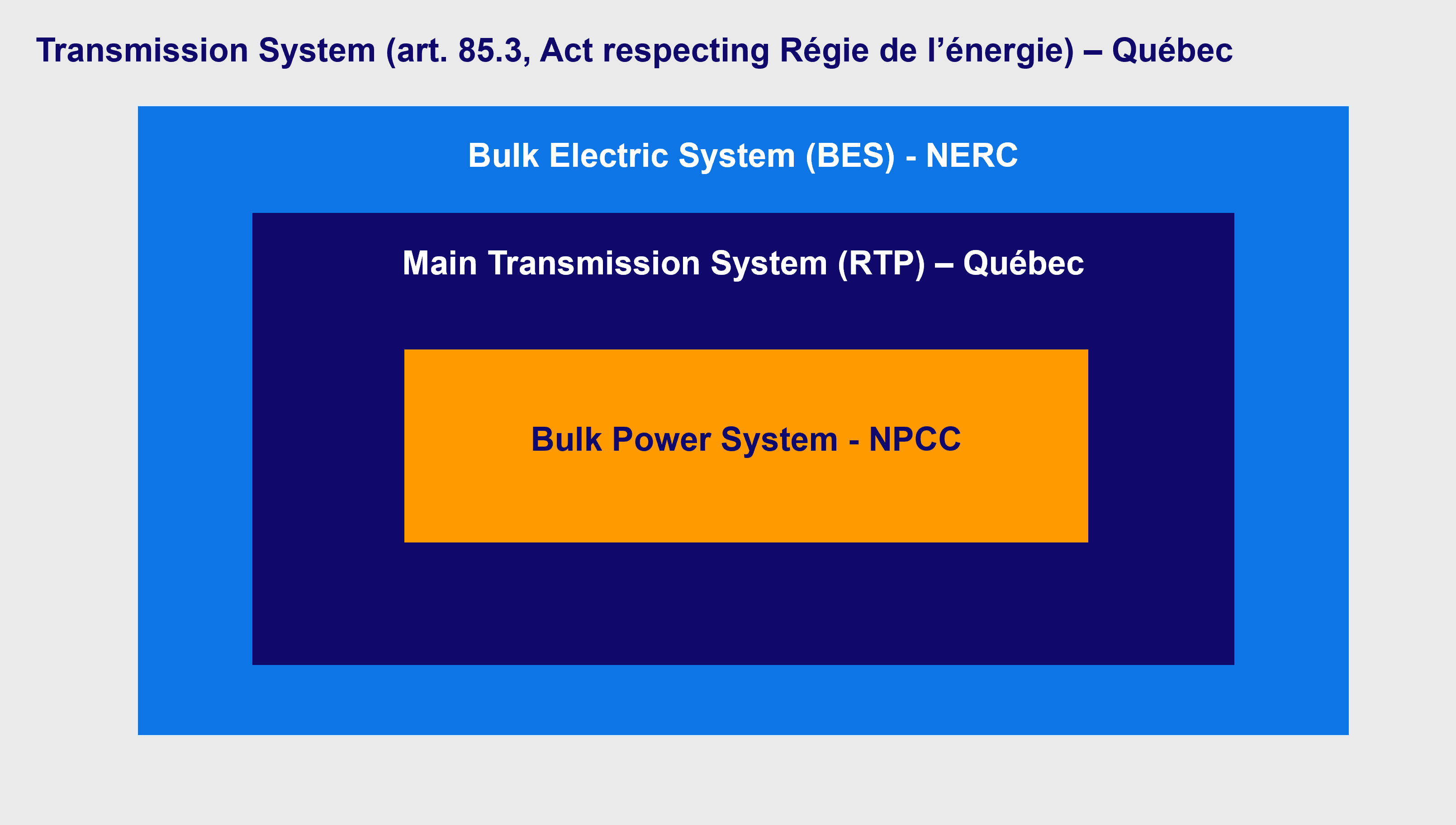Reliability News No. 10
Power systems and facilities subject to the reliability standards
Each of the organizations responsible for reliability has its own definition of the system subject to reliability standards. Not all reliability standards apply to all facilities connected to power systems, since the compliance monitoring effort would exceed any gains in reliability. NERC, the NPCC and the Reliability Coordinator use specific methods that determine whether a facility is part of their system to define which facilities are subject to the standards.
Bulk Electric System (BES)
The Bulk Electric System is the reference system in the United States and in several Canadian provinces. Although there are some specific inclusions and exclusions, in general it comprises all transmission facilities operated at 100 kV or higher and all generation facilities that produce 75 MVA or more. In the United States, reliability standards apply to all BES facilities.
Bulk Power System (BPS)
In northeastern North America, the Bulk Power System designates “the interconnected electrical systems within northeastern North America comprising generation and transmission facilities on which faults or disturbances can have a significant adverse impact outside of the local area.” Since when taken individually, these elements could have an impact on the other Interconnections, they are by definition critical to reliability. In Québec, the BPS consists primarily of the 735 kV system.
Main Transmission System (RTP)
The Main Transmission System (RTP) is the reference power system for the application of the majority of reliability standards in Quebec. Although there are inclusions and exclusions to the RTP, it essentially includes transmission facilities operated at a voltage of 300 kV or more and generation facilities having a power of 75 MVA or more.
Relationship between the reference systems
